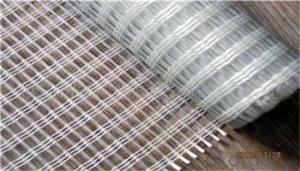Composite water pipes are the new kids on the block in the world of plumbing, and they’re making quite a splash. These innovative pipes are not just a pretty face; they’re also incredibly safe and sustainable. Let’s dive into the world of composite water pipes and explore why they’re the talk of the town.
The Evolution of Plumbing: A Brief History
Before we get into the nitty-gritty of composite water pipes, let’s take a quick trip down memory lane. Traditionally, water pipes have been made from materials like copper, PVC, and even lead. Over time, these materials have proven to have their drawbacks, from corrosion in the case of copper to environmental concerns with PVC. The quest for better, safer, and more sustainable solutions has led us to the development of composite water pipes.
What Are Composite Water Pipes?
At their core, composite water pipes are a blend of different materials that come together to create a pipe that is stronger, more durable, and more resistant to the elements than traditional pipes. They’re like the Avengers of the plumbing world—each material brings its unique superpowers to the team, and together, they’re virtually unstoppable.
The Benefits of Composite Water Pipes
Now that we’ve established what composite water pipes are, let’s talk about why they’re so great. Here are some of the benefits that have everyone buzzing:
– Longevity: Composite pipes are designed to last longer than traditional pipes, reducing the need for frequent replacements and minimizing waste.
– Resistance to Corrosion and Scaling: Unlike copper, composite pipes don’t corrode or scale, ensuring a cleaner and more efficient water flow.
– Flexibility: These pipes can bend and flex without breaking, making them easier to install and reducing the risk of damage during the process.
– Non-Toxic: Composite pipes are made from non-toxic materials, ensuring that the water you drink is safe and free from harmful chemicals.
– Environmentally Friendly: The production of composite pipes has a lower environmental impact compared to traditional materials, making them a more sustainable choice.
The Installation Process
Installing composite water pipes is a breeze, thanks to their flexibility and ease of use. Here’s a quick rundown of the process:
1. Assess the Situation: Before you start, take a good look at your current plumbing system to determine where the composite pipes will be installed.
2. Prepare the Area: Clear out any debris and make sure the area is clean and ready for the new pipes.
3. Cut the Pipes: Use a pipe cutter or a saw to cut the composite pipes to the desired length. Be sure to follow the manufacturer’s guidelines for cutting.
4. Connect the Pipes: Composite pipes often come with special connectors that make the connection process a snap. Follow the instructions carefully to ensure a secure fit.
5. Test the System: Once everything is connected, it’s time to test the system to make sure there are no leaks and that the water flow is smooth.
The Future of Plumbing
As we look to the future, it’s clear that composite water pipes are here to stay. They offer a safe, sustainable, and efficient solution to our plumbing needs. With ongoing advancements in technology and materials, we can expect to see even more improvements in the performance and capabilities of composite pipes.
The Bottom Line
In conclusion, composite water pipes are a game-changer in the plumbing industry. They offer numerous benefits that make them an attractive option for both residential and commercial applications. If you’re considering an upgrade to your plumbing system or building a new home, composite water pipes are definitely worth considering. So, what are you waiting for? Embrace the future of plumbing and make the switch to composite water pipes today!

